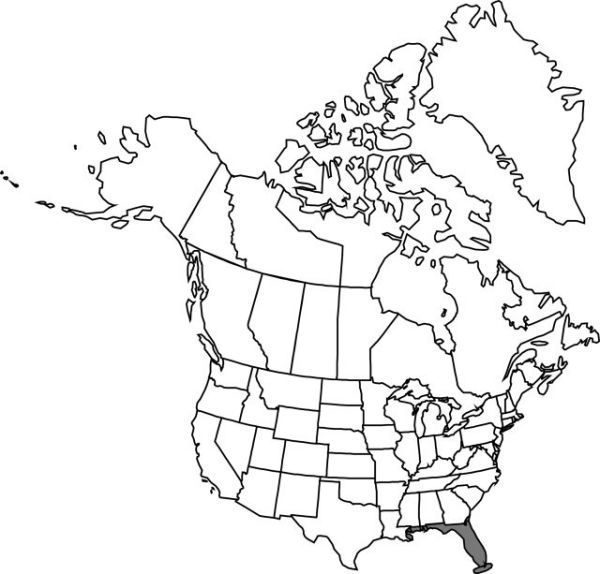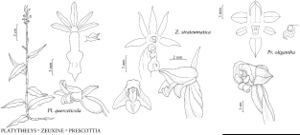Zeuxine strateumatica
Bot. Jahrb. Syst. 45: 394. 1911.
Plants 4–25 cm. Roots clustered at nodes of subterranean part of stem and rhizome, short. Stems from decumbent base, erect or ascending, greenish, tinged with purple or brown, slender. Leaves 5–12, spirally arranged, sessile, sheathing; blade erect, dark green, linear to narrowly lanceolate, keeled, 1–9 × 0.3–0.8 cm, apex long-acuminate. Inflorescences 8–50-flowered; rachis 1–8 cm; floral bracts green, ovatelanceolate to lanceolate, 15 × 4 mm. Flowers white with prominent yellow lip; dorsal sepal concave, ovate-oblong to oblongelliptic, 4–7 × 2–3 mm, apex obtuse; lateral sepals oblique, ovate-oblong to oblongelliptic, 4–6 × 2–3 mm, apex obtuse to acute; petals oblong-lanceolate, falcate, 4–6 × 1.5–2 mm, converging with dorsal sepal; lip adnate to base of column, sessile, base concave, subsaccate or cymbiform, containing 2 glands, lamina ± contracted in middle, abruptly dilated at apex, not extending beyond lateral sepals, 4 × 3 mm, fleshy; column 1.5 mm; anther between 2 large stigmatic processes, scarious; pollinia yellow; ovary sessile, stout, 7 mm. Capsules suberect, ovoid to ellipsoid, 7 mm. 2n = 22–64, 30–56, 50, 100.
Phenology: Flowering fall–winter (Oct–Jan), occasionally spring.
Habitat: Moist areas in a variety of habitats, including lawns, roadsides, nurseries, farm fields, occasionally hammocks and pinelands
Elevation: 0–30 m
Distribution

Introduced; Ala.(?), Fla., Ga., La., Miss., Tex., West Indies, native, Asia, Pacific Islands
Discussion
Given the weedy nature of these plants, the apparently high fruit set (C. A. Luer 1972, plate 36), and the spontaneous reproduction in greenhouses (O. Ames 1938), Zeuxine strateumatica is very likely autogamous or apomictic. Five cytotypes whose floral morphology overlapped considerably have been identified (S. P. Vij and N. Vohra 1974). In all but the 2n = 20 cytotype, meiotic behavior was abnormal.
Selected References
None.
